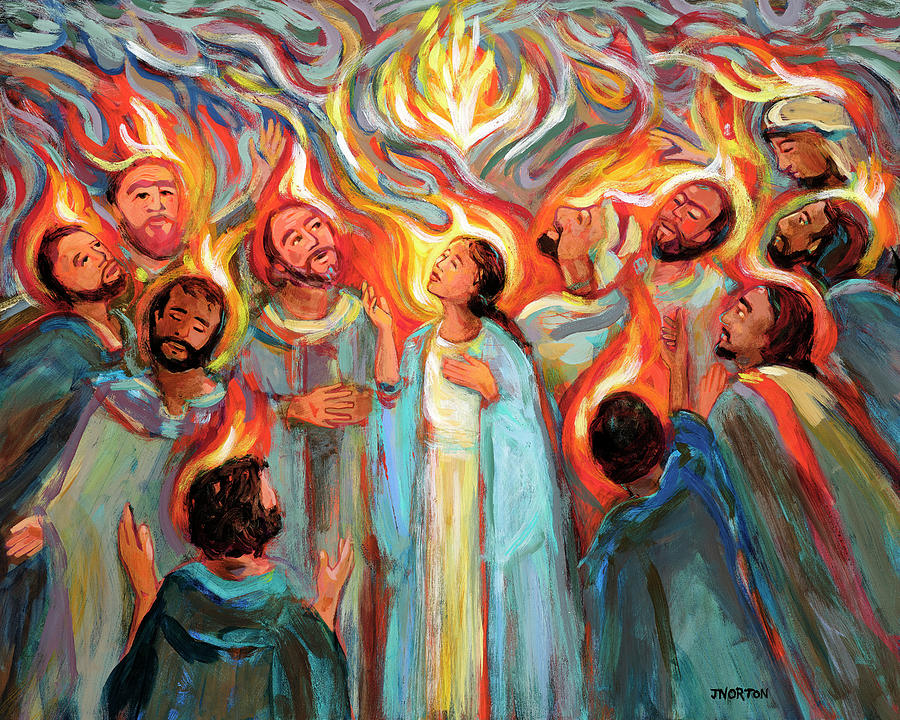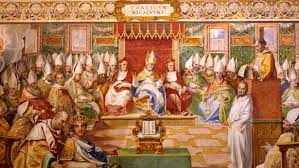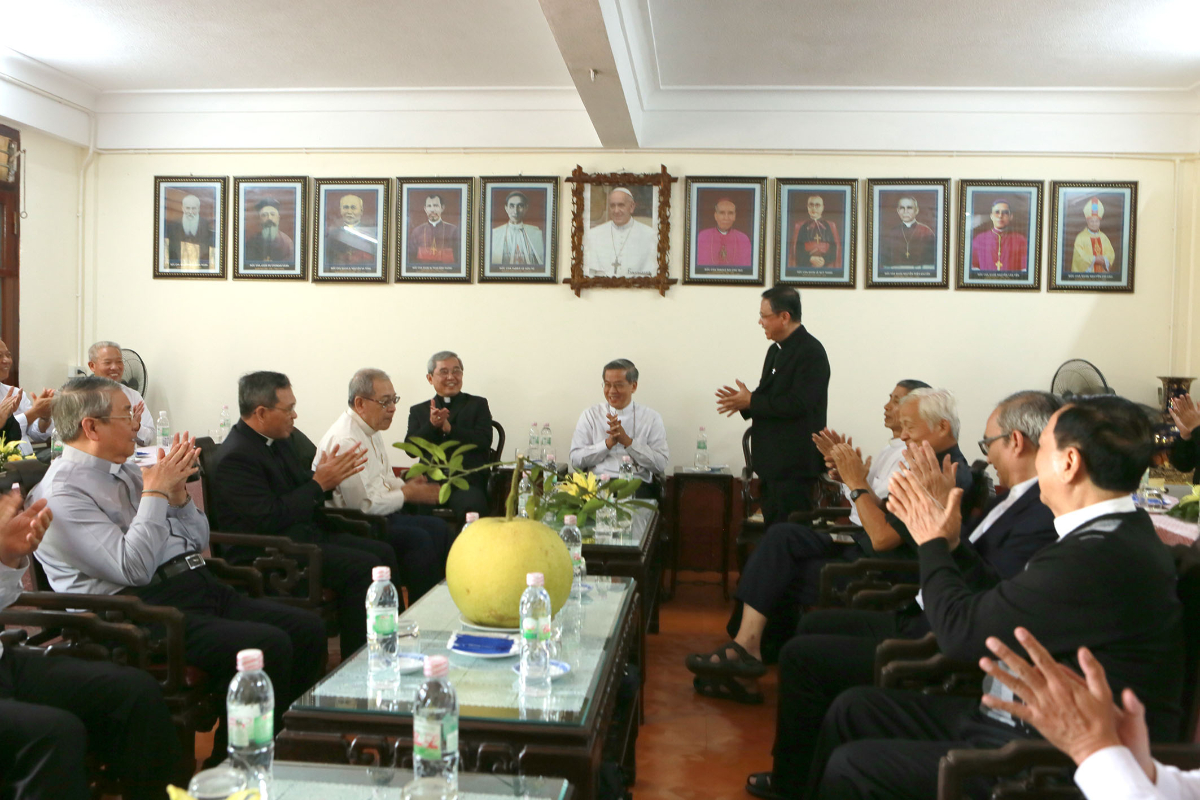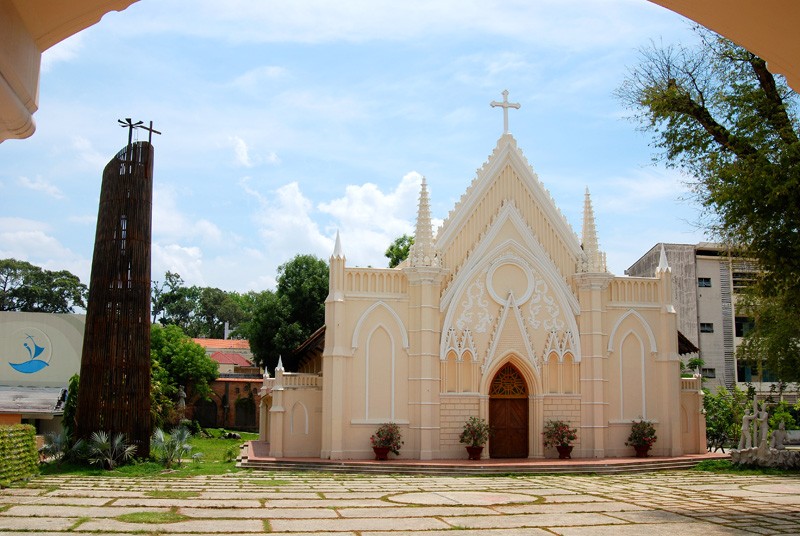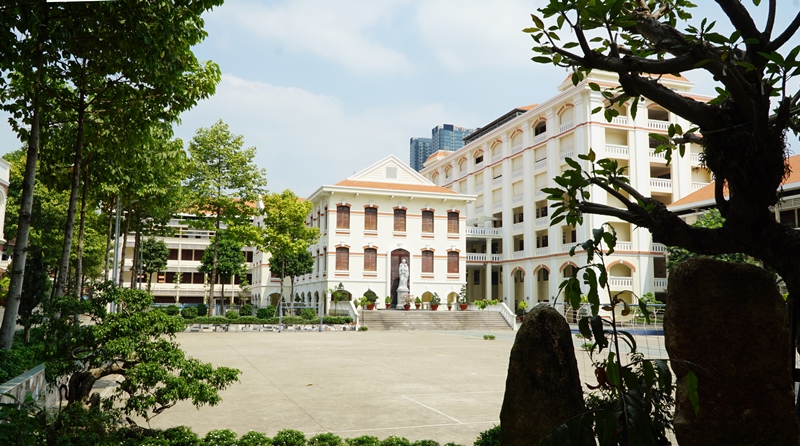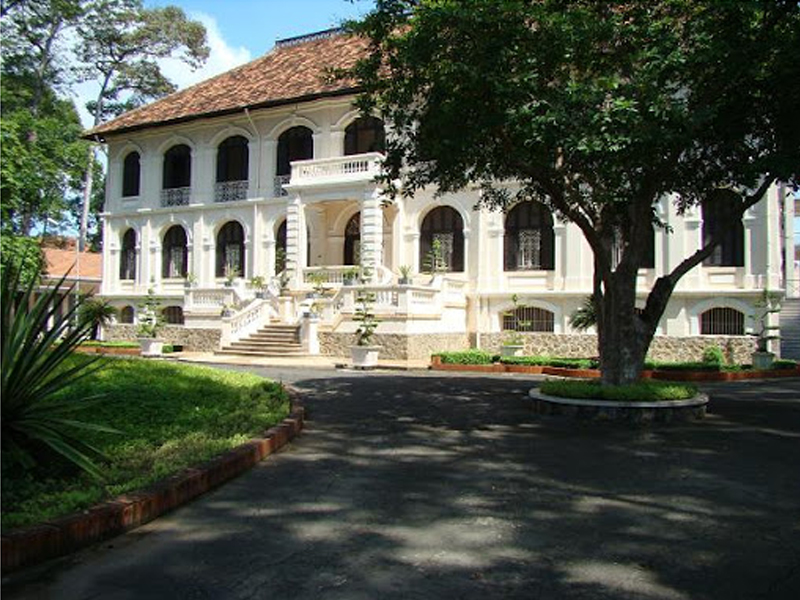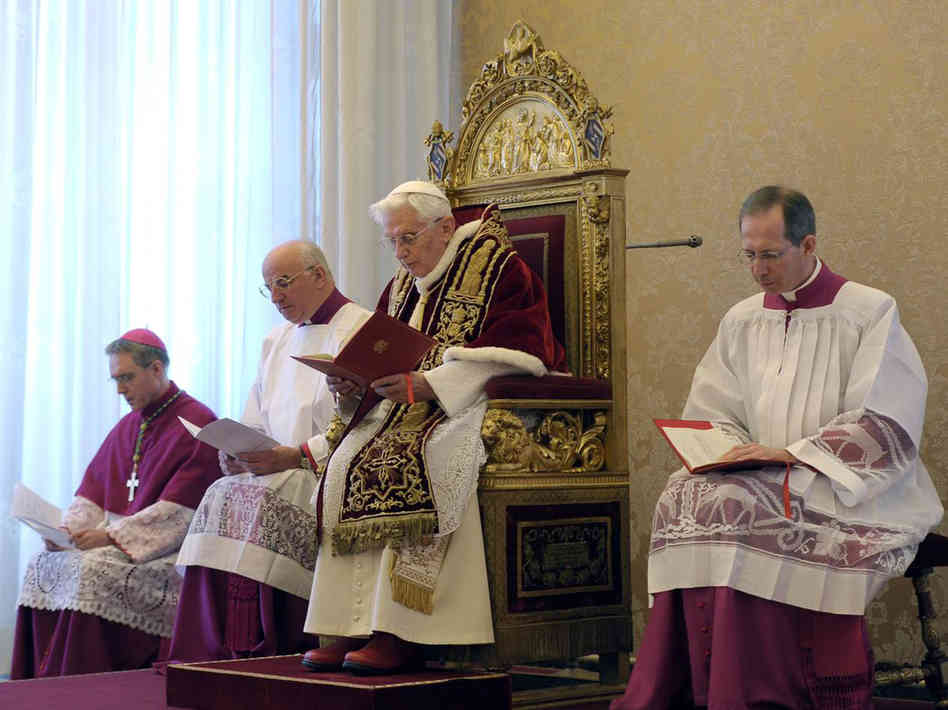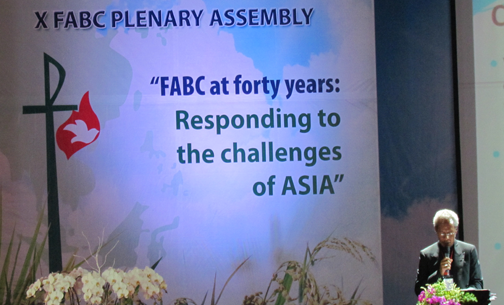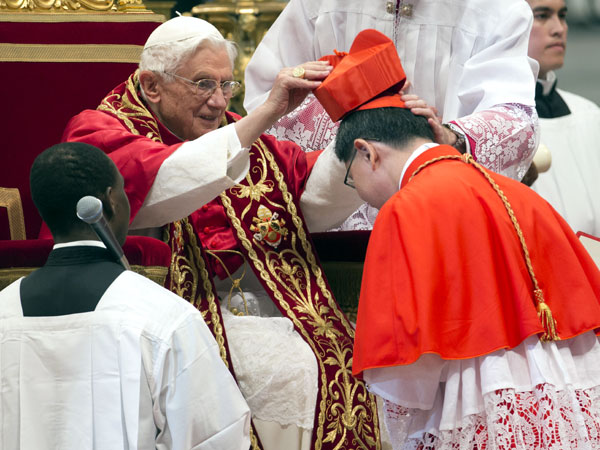Instrumentum Laboris of FABC X Plenary Assembly
FABC AT FORTY YEARS
RESPONDING TO THE CHALLENGES OF ASIA: A NEW EVANGELIZATION
DRAFT – FOR DISCUSSION PURPOSES
TABLE OF CONTENTS
Introduction
A. Remembering, We Give Thanks to God
1. For the Nine FABC Plenary Assemblies – Themes as Pastoral Directions,
Triple Dialogue
2. For the FABC Vision of Church in Asia
3. For the Methodology of Pastoral Discernment – Pastoral Cycle
For the Methodology of Building BEC/SCC – AsIPA
For the Methodology of Doing Theology – OTC Theological Process
4. For the Work of the FABC Offices in Evangelization and Renewal
5. For the Contribution of many Church Leaders, Theologians, Clergy, Religious and Lay to the FABC Work of Renewal
6. for the Collaboration of Episcopal Conferences and Local Churches
7. A Confession of Shortcomings – Collective Mea Culpa
B. DISCERNING THE SIGNS OF THE TIMES, WE PRAY FOR WISDOM
MEGATRENDS IN ASIA
1. Globalization – Economic and Cultural
2. Culture
3. Poverty
4. Migrants and Refugees
5. Indigenous Peoples
6. Population
7. Religious Freedom
8. Threats to Life
9. Social Communications
10. Ecology
11. Laity
12. Women
13. Youth
14. Pentecostalism
15. Vocations
C. REFLECTING IN FAITH ON THE PASTORAL SITUATION, WE PRAY FOR GUIDANCE
1. On the Story of Creation – Genesis 1 – 3.
a. God’s Word and Creative Spirit – Love, Goodness, Harmony
b. Rupture by Sin
c. Fundamental Principles
i. Communion and Solidarity of all Creation
ii. God, the Source and Sustainer of Communion
iii. Imago Dei, Human Dignity, Universal Communion
iv. Universal Destination of Created Goods
v. Responsible Stewardship of Creation
2. Telling the Story of Jesus – God’s Gratuitous Love (“Jesus from below”)
a. Proclaiming the Kingdom of God
b. Human Dignity, Solidarity, Communion, Preferential Love of the Poor
c. God’s Universal Love, the Harmony of Creation, the Centrality of the Human Person
d. Justice, Integrity and Service Beyond Conventions
e. Kenosis, Paschal Mystery, Redemption, Reconciliation, New Creation
D. Responding to the Pastoral Challenges, We Pray for Generosity and Courage
1. Basic Postulates of our Response
a. The Prophetic Role of the Church
b. The New Evangelization
c. The Mystical Dimension of our Response
d. Spirituality of Communion
2. Pastoral Directives – Resolutions of the X FABC Plenary Assembly
Conclusion: Prayer to the Blessed Mother for the Church in Asia
Introduction
1. In mysterious and invisible ways from time immemorial to the present day the creative and renewing Spirit of God continues to stir among Asian peoples and cultures as it hovers over the Asian continent. Deep in the heart of Asia’s teeming millions expectancy, vibrancy and energy pulsate, as Asians struggle for self-identity and a free development space in the social, political, economic, cultural and religious fields. Asia is a continent experiencing the hopes and joys of constant rebirth in the Spirit.
2. Led by the same Spirit we, Bishops from Asia, gather together in this beautiful country of Vietnam forty years after the juridical birth of the Federation of Asian Bishops’ Conference (FABC). In 1972 the Holy See approved the Statutes of FABC. This is a year of great joy, celebration and thanksgiving, even more blessed by the Lord as we celebrate the 50th anniversary of the opening of the Second Vatican Council (1962 – 65) and the 20th anniversary of the Catechism of the Catholic Church. As an added grace the whole Church began celebrating the Year of Faith (October 11, 2012 – November 24, 2013) as declared by our Holy Father Pope Benedict XVI so as to deepen our faith in view of the New Evangelization.
3. We come together then to express our deep gratitude for God’s blessings on the Church in Asia, to listen to the renewing Spirit and discern the pastoral situation that confronts us. We gather in dialogue between Local Churches and, with the grace of God, to respond with trust and daring to the challenges of the Asian situation. With immense hope we place the future of the Church in Asia in the hands of God.
“… do everything in the name of the Lord Jesus, giving thanks to God the Father through him” (Col. 3: 17).
A. REMEMBERING, WE GIVE THANKS TO GOD
4. We thank the Lord most deeply for the extraordinary flame of renewal that the Holy Spirit enkindled at the Second Vatican Council. Through Vatican II the renewing Spirit revitalized and rejuvenated the whole Church so that it may face the world with wisdom, boldness and hope. The Spirit stirred up the Church in Asia with great energy. To this day the key ideas of the Council -- the people of God, the Kingdom of God, integral evangelization, communion, co-responsibility, collegiality, participation, dialogue, liturgical renewal, engagement with the modern world -- continue to serve as guiding principles for the renewal of the Church in Asia. The ongoing Synodal movement that concretized Vatican II principles on communion, collegiality, dialogue and participation enormously contributes to this renewal. It was, in fact, to prepare for the 1974 Synod on Evangelization that the FABC first gathered.
5. We thank the Lord for the nine Plenary Assemblies of the FABC. They provided the principal themes of renewal for the Local Churches in Asia. At their first FABC Plenary Assembly in Taiwan in 1974 the Asian Bishops sought to discover how the Church, only a little flock of less than 3% of the total Asian population, could more effectively and credibly announce the Good News of Jesus. With the light of God’s Spirit the Bishops perceived three great Asian social phenomena: the massive poverty of Asian peoples, their rich mosaic of ancient cultures, religious and philosophical traditions. The Asian Bishops responded with a vision of evangelization by way of a living Triple Dialogue: dialogue with the poor of Asia (integral liberation and option for the poor), dialogue with their cultures (inculturation) and dialogue with their religious and philosophical traditions (inter-religious dialogue). They affirmed that the acting subject of mission is the local church, incarnated and rooted firmly in the culture of its people, taking up their strength as well as their weaknesses in the light of the healing and redeeming grace of Christ.
6. The Bishops then examined the internal requirements of a Church for credible integral evangelization and probed into the nature of the Church as acommunity of prayer which is its very life, animated in all its being by the Spirit of God. They explored the Church as a community of faith in communion with the triune God, a communion of communities, fundamentally characterized by participation and co-responsibility. They discerned the indispensable evangelizing role of lay people in the Church particularly in the vast field of secularity which is especially their own and strongly pressed for the activation of their baptismal gifts, in the building up of the Church and the transformation of Asian society. Realizing the increasing demands of mission and the diminishing sense of mission with the approach of the third millennium the Asian Bishops firmly reiterated the centrality of Jesus in evangelization. They provided a renewed justification for mission as an imperative from the Lord Jesus and a necessary concomitant of the gift of faith, thus providing a strong impulse to the missionary spirit while re-affirming dialogue as the mode of mission in Asia.
7. In announcing the Reign of God and the Good News of Jesus, the one Lord and Savior, the Church has to be a humble servant. She is a community-in-mission, a disciple-community in the footsteps of the Lord Jesus who came to serve and not to be served. Christian discipleship in Asia, the Asian Bishops said, has to be a service to life, the full life of unending communion with God promised by the Lord Jesus. Such communion is to be reflected on earth by the solidarity of peoples with one another and solidarity with all creation. The Church-in-mission has always to be open to the renewing Spirit. All its members have to renew themselves continually in mind and heart towards a holistic spirituality and missionary engagement in a mission of love and service.
8. Evangelization and renewal in Asia takes the family as the focal point. The Asian family is the cellular receptor of everything that impinges Asian societies for good or evil. A renewed Asian family is a renewing family that strives towards an integral culture of life in the midst of death-dealing forces. For this purpose, a renewed holistic family ministry in the local church is required, a ministry that develops a family spirituality which promotes a culture of integral life. Family spirituality is to be built on the spirituality of communion, the communion between husband and wife. Communion in the family is rooted in the communion of unending love between God the Father, Son and Spirit, a communion that flows inexorably to the children born of the love between husband and wife, and reaches out in solidarity towards others regardless of religion or culture.
9. Nowhere is such communion of love most deeply and dramatically expressed than in the Holy Eucharist. Communion is at the very heart of the Eucharist, the communion of Jesus with the Father and our communion with Jesus who in sacrificial redeeming love gives his own Body and Blood to us. In the offering of Jesus’ own Body and Blood in the form of bread and wine, communion radically flows towards all humanity and the whole of creation. At the Eucharist we recognize and confess our brokenness, plead for forgiveness and reconciliation. There we pray for a Culture of Life in Asia, remembering the life-giving memories with which God has blessed Asian societies in movements of peace and freedom, of truth and justice, of love. The full significance of the Eucharist as the love of Jesus poured out for integral salvation impels us to act towards social transformation. There is no other way to be truly and profoundly thankful or Eucharistic but to live the Eucharist in its personal, communitarian, and social dimensions.
10. We thank the Lord for a challenging vision of Church in Asia. This vision of Church has been the over-all objective of the pastoral reflection, discernment, prayer, and pastoral action of the FABC through the years. We envision a Church that is:
• truly Asian, in triple dialogue with the religions, cultures and peoples of Asia, especially the poor;
• a humble servant of the peoples of Asia, accompanying them to the Kingdom of God;
• a credible herald of the Gospel, a disciple-community sent on mission of integral evangelization to tell the story of Jesus to Asians in season and out of season;
• bearing in herself the Asian face of Jesus, the God who became Man, who was compassionate, loving, forgiving, self-sacrificing; a teacher, servant, healer, prophet, life-giver, ennobler of the poor;
• a Church of the Poor and of the Young where the sick and the needy are at home;
• a participatory Church of renewed servant-leaders, of prophetic Religious and empowered laity;
• a communion of communities, reflecting the Trinitarian communion;
• in solidarity with the whole of creation.
11. We thank the Lord for the FABC methodology of pastoral discernment (Pastoral Spiral/ Cycle). The Pastoral Cycle begins with immersion-exposure in the life situation of a group of people, proceeds to situation analysis and reflection in faith on the situation, results in pastoral decisions and planning to implement the decisions and ends with implementation. An elaboration of the classic see-judge-act methodology, it is used by FABC Offices in some of their Bishops’ Institutes. Without the component of immersion-exposure, this methodology has consistently been used by the FABC Plenary Assemblies as the Bishops considered contextual realities in order to arrive at pastoral decisions that would advance the mission of the Church.
We are likewise thankful to the Lord for an Asian approach to build Basic Ecclesial Communities or Small Christian Communities (Asian Integral Pastoral Approach - AsIPA). Adapted to Asian situation from the Lumko method of South Africa, the approach is biblically oriented formative and participatory, designed to build “Word-centered” communities of faith. As one approach being used by local churches in Asia to build BECs or SCCs it has attracted the interest of some parishes in Germany.
We thank the Lord for an experiential and contextualized method of theological reflection that is at the service of mission and pastoral ministry. The method relies first on Sacred Tradition and Sacred Scripture which form the one sacred deposit of the Word of God that is interpreted authentically by the Church’s magisterium. But it takes in Asian realities as resources insofar as God’s presence and action and the work of the Spirit is discerned. It is a method of “liberative integration, interrelatedness and wholeness” and “emphasizes symbolic approaches and expressions, and is marked by a preference for those in the periphery and ‘outside the Gate’.”
12. We thank the Lord for the FABC Offices that spearhead the implementation of FABC resolutions towards a renewed Church in Asia. Through Bishops’ Institutes they assist Episcopal conferences, clergy, religious and laity to understand more deeply Asian pastoral issues and conceptualize pastoral approaches and directions. They help in pastoral envisioning and initial pastoral planning, such as envisioning evangelization, social communications, integral human development, lay empowerment, inter-religious dialogue, priestly and religious renewal, seminary formation, education and faith-formation, formation of families, women and youth. Many of the results of such Institutes are incorporated in the theological reflections of the Office of Theological Concerns.
13. We thank the Lord for the invaluable contribution of many great leaders of the Church in Asia who conceptualized, planned, and brought the Federation of Asian Bishops’ Conferences into being. They were joined by many others who nurtured the Federation to what it is today. Asian prelates, theologians, expert Clergy, Religious and lay people have collaborated in this enormous pastoral undertaking. They have contributed their talents and time to build up communion within the Church for mission.
14. Finally we thank the Lord for the Episcopal Conferences and Local Churches that constitute the FABC, their Bishops, Clergy, Religious and Laity - from Central Asia to Southeast Asia, from Kazakhstan to East Timor. Through the years, they have generously contributed to the growth of FABC from its humble beginnings in 1972. The FABC process has been truly a dialogue between local churches, where Bishops in communion, solidarity and affective collegiality collaborate to announce the Good News of Jesus and of God’s Kingdom. The Lord has, indeed, blessed FABC through and in each of its member Conferences for the mission of evangelization that he has entrusted to the Church in the Asia.
15. A Confession of Shortcomings. Yet while thanking the Lord for countless blessings, we are sadly aware that our decisions and actions do not always match our words and intentions. Renewal of values and mind-sets, of agents of evangelization and of church structures towards a new way of being Church has not been steady and consistent. The FABC vision and its key ideas, its programs and projects have not yet impacted grassroots to the extent that we had desired. We have a long way to go towards the vision of a new way of being Church. For this we humbly say to the Lord, mea culpa, mea maxima culpa. On this year of anniversaries for the Church, we recommit ourselves with greater resolve to the mission of New Evangelization.
B. DISCERNING THE SIGNS OF THE TIMES, WE PRAY FOR WISDOM
The Spirit of the Lord calls upon us again to discern the signs of the times as did our brother Bishops in 1974.
Mega-trends in Asia
Among the signs of the times are positive and negative mega-trends that will shape the evangelizing mission of the Church in Asia. They are pastoral challenges with a new face, new forms, new facets and emphases.
16. Globalization. The overarching mega-trend that impacts all dimension of Asian life is globalization. It is an ongoing, inexorable, complex and ambivalent process that impacts as both bane and blessing the world of politics, economics, communications, education, environment, technology, religion, culture, family, and values. Driven as an economic process by neo-liberal capitalism it emphasizes free-markets and free trade in order to maximize economic growth. It has led to “free competition” which many critics deem to be detrimental to poor countries whose very poverty makes them unable to compete in the global market. As a cultural phenomenon using the means of social communication, globalization is quietly and insistently disseminating a relatively new culture that threatens cherished Asian cultural values.
17. Culture. Once the dominant catalysts of civilizations the ancient cultures of Asia are facing the formidable challenge of a globalizing and homogenizing culture. This is the secular, materialist, consumerist, and relativist culture of the developed world. Many sectors of Asian societies have embraced various elements of this culture, most visible of which is consumerism catered to by mushrooming and sprawling giant shopping malls all over Asia. The post-modern spirit of the 20th century is transforming human values and relationships for better or for worse. Cherished family values are under siege. Clashing with the pervasive Asian sense of the sacred and of transcendent, the “new culture” relegates the faith, the sacred, and the religious to the margins of life with hardly any influence on public policy and public life.
On the other hand the emerging global culture is admittedly replete with blessings. It has re-emphasized human freedom, human rights and equality. Scientific and technological knowledge is now shared more widely among the peoples of the world. The tools of social communication disseminate information more rapidly than ever imagined and provide new avenues of dialogue and human formation. A new hope for interdependence, interconnectedness and solidarity among the families of the world is re-enkindled in the midst of conflict, human greed and selfishness. How the bane and blessings of economic and cultural globalization can be made opportunities of grace through New Evangelization is the over-riding challenge to the Church in Asia. The goal is “globalization without marginalization, globalization with solidarity”
18. Poverty. Regional economic disparities mark the economic landscape of Asia. We see high development levels in the FABC territories of South Korea, Japan, Taiwan, Hong Kong, and Taiwan, rising development in Thailand and Malaysia, and the countries of Central Asia, while most countries in South and Southeast Asia generally lag far behind, mired in general poverty. Exacerbated by globalization, poverty is heightened by economic and political imbalances and injustices. The underdevelopment of agriculture which makes up the main production and livelihood of Asian countries contributes to this economic malaise. A new form of poverty has also emerged in the wake of globalization, the poverty of those who do not know and are being left behind by the rapid advance of scientific and technological knowledge.
But we also perceive the creative work of God’s Spirit in the solidarity of elite sectors of society in the struggle of the poor for a better future and in the increasing participation of the poor in the mission of evangelization and social transformation. All over Asia communities of poor people are becoming more aware of their God-given power to liberate themselves in solidarity with others. Their power to announce God’s good news of blessedness for the poor is becoming more deeply embedded in the self-consciousness of a Church that strives to be a Church of the Poor. At the same time Asian economies are being transformed by the drive for sustainable development.
19. Migrants and Refugees. The phenomenon of migrant workers and refugees in search of better work and security - a better future – has been a continuing concern of the FABC, especially of the Office of Human Development. Many Asian migrant workers and refugees often work under most inhumane conditions. They are exploited and abused, their human rights violated. No wonder that the plight of many migrant workers is considered as the “new slavery.” In recent times a new facet has emerged. The concern for internal security, the war on terrorism, the ethnic, cultural, and demographic changes in Western societies due to migration have brought about restrictive measures of migration. The ongoing global economic crisis has sent home literally millions of Asian migrant workers with no assurance that they would be called back to work.
Yet we also discern the work of the Holy Spirit in the phenomenon of Asian migrants. In their places of work they are witnessing to the Asian sense of close family relationships. In the midst of developed secular societies Asian migrants demonstrate their deep spiritual sense. Catholic migrants witness to their faith in Christ and by example lead others not only to question their secular spirit but also, by the grace of God, to return to Christian prayer and devotion.
20. Indigenous Peoples. In the past 15 years the FABC has urged local churches to focus on indigenous peoples as a major pastoral priority. As a social group they remain to be among the poorest of the poor in Asia. There are about 300 million indigenous peoples in the world and make up only 4.4% of the global population, but they account for about 10% of the poor. And nearly 80% of indigenous groups live in Asia. China and India account for two-thirds of the indigenous peoples of the world. Generally indigenous groups face a triple challenge: economic survival, cultural survival, and threats to their land and environment. Deep concern for indigenous peoples and their marginalization flows from the Church’s option for the poor and her vision of becoming a Church of the Poor.
21. Population. The global population in mid-2011 was estimated at seven billion people. Over 60% live in Asia. India and China account for 37% of the global population. The policies of Asian governments to control population growth tend to adhere to decisions of international bodies and of developed secularist countries that poverty and “overpopulation” are directly related. The neo-Malthusian theory that population growth is outracing food supply is the reason for controlling population through “reproductive health” concepts and measures that advocate means of birth control contrary to Catholic teaching. We shall continue to insist that population control by such means is not merely a demographic and economic issue but a moral issue. How the Church in Asia will proclaim the Gospel of Life more persuasively in a world where secularist, materialist, and relativist thinking usurps authority over human life from conception to death is a perennial challenge.
22. Religious Freedom. An increasing threat to religious freedom is the rise of religious extremism. In several Asian countries the persecution of Christians is on the rise. Terrorist bombings, abuse and violence against Christians, religious persecution and discrimination, forced conversion of Christians into the dominant religion, anti-Christian laws, create terror and insecurity and makes inter-religious dialogue almost impossible. Partly because of the inter-active relationships of extremist religious groups, terrorism perpetrated in some parts of the world has repercussions in Asian countries. The rise of religious extremism and violence plays havoc on the Church’s vision of inter-religious dialogue.
On the other hand, we also perceive in Asia an increasing awareness of the need for inter-religious dialogue to understand and respect one another. We discern a positive inclination to go beyond dialogue of life in order to collaborate with one another in common social promotion. More and more people believe in dialogue as the principled option to resolve disputes, tensions and conflicts and promote peace and harmony.
At the same time the ideological threat to religious freedom is readily observable in some Asian countries that officially profess religious unbelief and want to impose political authority on religious groups. Christians do not have total religious freedom and suffer excessive constraints and sometimes violent repression. In some instances there is non-recognition of church leadership. The lack of religious freedom because of political ideology causes untold suffering among millions of believers, separated from their own believing communities. Its demise is sadly unforeseeable in the near future.
23. Threats to Life. Increasing threats to life are most disturbing and frightening. Ethnic conflicts, violent repression of ethnic rights, the killing of those who struggle to protect the environment, killings in the name of national security, arms build-up and even nuclear threat, the lack of medical and social services due to endemic corruption – all these and other threats to life are taking place, sometimes with impunity. Most tragic are the many threats to life against the helpless – the unborn, the hopelessly sick who are considered “burdens” of society. Millions of abortions or the destruction of unborn children take place every year, simply because they are female fetuses or unwanted. The use of contraceptives, many of which are abortifacients, for reasons of “reproductive health” is becoming official government policy in many Asian countries. Genetic engineering threatens the life of human embryos and considers them as simple objects of experimentation rather than as divinely gifted with human life and dignity.
24. Social Communications. A mega-trend that is developing in quantum leaps with enormous potentialities is Social Communications. The means of social communications now seem to be the primary formator of values especially among the young. Because social communications have a grip on eyes, ears, mind, memory and imagination, their power to form attitudes and values is immeasurable. We strongly inveigh against the secularist, materialist, consumerist, and relativist values that they often impart. But looking beyond the negative is a tremendous opportunity for evangelization. Social communications is a bewildering and exciting new areopagus of proclaiming the Good News. Social networking facilitates and creates relationships. The e-generation has emerged, with a free spirit, new interests, new attitudes, and new values. The potentialities of this mega-trend for the mission of new evangelization are immeasurable.
25. Ecology. The old challenge to the integrity of creation consisted of rapid indiscriminate and irresponsible deforestation leading to floods, droughts, soil erosion, and loss of life-support systems. Today the ecological question has to do with a far more urgent and destructive issue – that of global warming and climate change. The whole world is experiencing the disastrous signs of climate change. Our world is warming up with the uncontrolled emission of carbon dioxide into the atmosphere particularly in the developed world through the use of fossil-fuel. This creates a greenhouse effect that raises sea temperatures and water levels, breaks up glaciers, melts polar ice, results in extraordinary rainfalls, floods, and extreme weather changes.
Even now hundreds of thousands are ecological refugees as they search for safer places away from floods and rising sea levels. Climate change is wreaking havoc on agricultural production and on sources of livelihood.
We in Asia are becoming increasingly aware and concerned regarding the ecological problem and its ethical implications. Local churches are collaborating with civil society to care for the integrity of creation. The local concern against polluting the atmosphere, irresponsible mining and logging, destructive fishing, etc., now extends to the macro-issue of global warming and climate change as well as to the need for intergenerational justice. This awareness, concern and action on the ecological challenge are being brought down to the level of the grassroots.
26. Laity. Truly encouraging is the movement of lay “empowerment,” or the activation of lay charisms that are gifts of the Spirit at Baptism and Confirmation. This empowerment is taking place in local churches all over Asia. The seminal ideas of Vatican II on communion, co-responsibility, and participation have been brought down in Asia to the level of Basic Ecclesial Communities, ecclesial movements, and other faith communities, enabling lay people to participate actively in the mission of the Church, in decision making, and in action for social transformation.
27. Women. For more than a decade now the Church in Asia has considered women as a major pastoral priority. Of most serious concern are discrimination against women, abuses against women and girl-children as in domestic violence, sex tourism and human trafficking. Traditional and cultural practices that exploit and repress women’s rights, sometimes considering women as second class citizens cause utmost distress. We strongly denounce the abuse of women migrant workers and the abortion of millions of unborn human beings simply because they are female or unwanted. At the same time, we observe in Asia a rising consciousness regarding the mutuality and equality of dignity and rights of man and woman, of gender awareness and sensitivity and the “empowerment” of women. Young women are at the vanguard of movements of freedom and peace, of the care for the integrity of creation. They actively participate in the Church’s ministry of catechesis, liturgy, family life and youth, health, and social action.
This mega-trend calls the Church in Asia to deeper discernment, compassion and wisdom towards women for a more effective and credible mission of evangelization and integral social transformation.
28. Youth. It is more than 40 years since Asian Bishops gathered in Manila and, inspired by the message of Pope Paul VI, called the Church to be a “Church of the Poor” and a “Church of the Young”. Granting regional differences Asia remains to this day a continent of poor people and of young people. On the one hand, we observe young Asians who are seemingly restless, without direction, drifting into a sub-culture of the easy life, chemical dependency, rebellion, and despondency over meaninglessness and busy-ness. They think of the future as without hope and many just want to give up.
On the other hand, young people are at the vanguard of social change, active in movements of freedom, justice, peace human rights, and the care of the earth. In the Church they are taking their role as subjects of evangelization most seriously. They serve as catechists, lectors, peer counselors, social action workers, promoters of pro-life, and health workers. In a continent of the young, the challenge of the youth is full of hope for the Church in Asia.
29. Pentecostalism. Recent statistics show a certain decline in Church membership and at the same time a significant increase of membership in so called “born-again, bible-believing” Christians. We tend to console ourselves and say that numbers do not matter as much as quality. Yet the loss of a good number of the faithful to sects and other religious groups is undoubtedly a matter of serious concern. The question often asked is why? Why do so many of the flock go over to different religious sects? Why do religious sects attract them? These questions should make us reflect on how we evangelize, how we form the faith of the faithful, and what quality of fellowship our churches have. Providentially the challenge of Pentecostalism is being met with the phenomenal rise and spread of Catholic renewal communities such as charismatics, covenant communities, ecclesial movements in Asia, and especially Basic Ecclesial Communities (BEC or Small Christian Communities), parish or diocesan wide. BECs and SCCs as well as many other renewal communities are Asian-born. They witness to the hunger of people for the Word of God and the Eucharist. They provide faith formation, the experience of joyful worship, fellowship and belongingness. They demonstrate the zeal and dedication of lay people to celebrate and witness to their faith in the Lord.
30. Vocations. The Church in Asia, as in Africa, is enjoying a springtime of vocations to the priestly and religious life. For many decades now, despite our “minority status” in the Asian continent we have become a “sending Church.” Dioceses and religious congregations, both indigenous and foreign-born, are now sending lay people, religious, and priests as missionaries from their centers to other Asian countries and to all the other continents of the world. The depth and richness of the Asian spiritual sense is a firm basis for a culture of vocation and is certainly a factor for the great number of young men and women who respond to God’s call to the priestly and religious life and to mission.
31. These mega-trends are the lights and shadows of an Asian world stirred to profound renewal by the Spirit of God. They offer immense possibilities and hope. Indeed, the positive mega-trends are moments of grace while the negatives are opportunities of grace. They all remind us of our God-given task to mend our Asian world, its broken relationships, the lack of harmony and peace between men and women, between ethnic, cultural and religious groups, between Asian humanity, creation and God. The ever active sanctifying Spirit of God is calling us to cooperate in the task of renewing our Asian world towards justice, integrity, unity, reconciliation, peace and harmony, love.
On these mega-trends in the social, political, cultural, economic, religious and ecological situation we Asian Bishops offer a guide reflection in the light of our faith.
C. REFLECTING IN FAITH ON THE PASTORAL SITUATION, WE PRAY FOR GUIDANCE
In the beginning God created the heavens and earth. Everything that came from him was good. There was love, goodness, harmony and peace, a divinely created order.
God’s Word and Creative Spirit - Love, Goodness, Harmony
32. The two wonderful narratives of creation and the tragic story of sin in chapters 1 - 3 of the Book of Genesis express profound truths with elegant narrative simplicity:
• The heavens and the earth came from the word of God. At the very beginning the creative Spirit of God was at work (Gen 1:1-2, “a wind from God swept over the face of the waters”; “God said….”);
• God’s creative word brought forth into being everything in heaven and earth, light and darkness, the land, seas and skies, all vegetation, night and day, every living creature that moves in the water and on land and God declared everything as “good” (vv. 3-25);
• At the pinnacle of this ordered creation is the human person. God uttered his creative word to bring man and woman together into being – unto God’s image. Between man and woman was the joy of communion: “”bone of my bones, flesh of my flesh,” man and wife “become one flesh” (vv. 26-27; Gen 2: 21-25);
• God blessed man and woman to multiply and fill the earth, have everything on earth for their responsible use. To have dominion over creation is to be responsible stewards of creation. This is the first mandate of solidarity between humankind and the rest of creation. It is at the root of the social moral principle of the universal destination of created goods (vv. 28-30; Gen 2:18-20);
• Having shared his goodness and love with creation and humanity God unconditionally declared all creation as “indeed very good” and affirmed the “integrity of creation” (v. 31).
• Creation, indeed, is simply the story of God’s purely gratuitous love.
Rupture by Sin
33. This pristine goodness of creation and of relationships among all creatures, between humanity and God was radically ruptured by the sin of disobedience to God the Creator due to human pride and overweening self-interest. Brokenness entered the relationship between the Creator and humanity. Humanity and creation began to blame one another, and the harshness and pain of caring for one another and for the earth began (Gen. 3).
Yet even after the Fall, the beauty, the order and harmony of the heavens and of the earth and the power of natural forces continue to strike us with awe – and reverence. “O Lord our Sovereign, how majestic is your name in all the earth!” (Ps. 8: 1, 9). How truly marvelous God is! The sinfulness of humanity in Genesis 3 has its proto-evangelium. To the serpent, the Lord said: “I will put enmity between you and the woman, and between your offspring and hers; he will strike you and you will strike his heel” (Gen 3:15).
Fundamental Principles
34. Communion and solidarity of all creation. Thus at the time of Creation God already established the fundamental relationship of communion and solidarity between humanity and divinity, between man and woman, within the family, between family and community, and between humanity and the rest of creation.
35. God, the Source and Sustainer of Communion. At the center of these relationships and holding them together is God. These fundamental relationships are in truth overarching religious, moral, and social principles that address major dimensions of the pastoral situation in Asia. In fact the spirit-orientation of Asians is a basic acknowledgement of the pervading sacred horizon of God as Creator, the source of everything that exists. The deep Asian sense of the sacred and religious certainly serves as a powerful buffer to the subtle but powerful onslaught of a materialistic and secular a-religious culture.
36. Imago Dei and Universal Communion as a Countersign. The dignity and worth of the human person as imago Dei and the original community and solidarity of the human family directly address social, political, economic, cultural, ideological and religious situations where human dignity and freedom are violated, abused or repressed. These death-dealing forces we see sadly in totalitarian and dictatorial regimes, in the inhumane treatment of many Asian migrants, in minority-majority cultural, political, economic and religious conflicts, in cases of violent and terrorist extremism in the name of religion, or where religious majorities do violence to the religious freedom of others.
37. The love, unity, complementarity, and solidarity of man and woman in the Garden of Eden, their divine gift of intimate communion, challenge today’s broken family relationships, the disregard of marital vows, the disrespect given to the God-willed marriage as between man and woman. The fundamental principle denounces gender discrimination, the various forms of abuse and exploitation of women, and the evils of social customs and practices that consider women as subservient to men.
38. The Universal Destination of Created Goods. The original communion and solidarity that existed at the beginning between humanity and the rest of creation – a situation declared by God as “good,” and implied as well in God’s mandate to cultivate and care for the earth - are moral and social principles that are urgent in our day. They strongly indict the power of the few to control the use of natural resources that at the time of creation God destined for the use of all humanity. The same principles denounce the continuous destruction of our natural resources, forests, seas, fauna and flora where the common good of the present and future generations is sacrificed for short time economic gains. It is most disastrous that in many cases such destruction is now irreparable and irreversible.
39. Responsible Stewardship for the Integrity of Creation. The same principles denounce the human irresponsibility that causes global warming and climate change. In the covenant of creation, God’s mandate for humanity to subdue creation and have dominion over it is nothing more and nothing less than to cultivate the earth and care for it for the sake of all. As Genesis states: “The Lord God took the man and put him in the garden of Eden to till and keep it” (Gen. 2:15). Humanity is the steward of God’s creation responsibly making use of creation for the good of humanity. When these principles of stewardship and the “goodness” or integrity of creation, including its beauty and harmony of order, and the universal destination of created goods are wantonly violated we do grave injustice to creation and to human generations yet to come. The words of King Solomon are most relevant. He rightly understood that to have dominion over the creatures God had made is to rule over it “in holiness and righteousness.” And so he prayed to God for wisdom (see Wisdom 9, 1-3).
40. As a final note, in contrast to the limited cosmogony of Genesis, by “heavens” today we understand a universe that is expanding through new discoveries of stars and galaxies beyond our ken. Our faith in God as Creator would certainly include all these and all the worlds not yet discovered – the entire Cosmos as God’s creative handiwork.
TELLING THE STORY OF JESUS – GOD’S GRATUITOUS LOVE
41. Our faith reflection goes further – into the heart of Sacred Scriptures. How does the pristine goodness of the created world and of humanity as well as its rupture by sin relate to the event of salvation wrought by the Lord Jesus? This question is best answered by telling the magnificent story of Jesus.
Proclaiming the Kingdom of God
42. The gratuitous love of God manifested in Creation is never as dramatically demonstrated as in the Jesus-event. This is the story that we tell in Asia – Jesus the Compassion of God.
In the very first chapter of the Gospel of Mark, Jesus appears quite suddenly like a meteor flashing through the skies. He is in the prime of his life, energetic, peripatetic, and prophetic. A poor man from Galilee, he begins proclaiming what people had been dreaming of for ages: “The Kingdom of God is at hand. Repent and believe in the Gospel” (Mk 1:15). This is both promise and fulfillment. He promises God’s justice and truth, God’s peace and love, - the restoration of universal harmony long craved for by a broken world. His message goes far beyond the understanding of his contemporaries. For them the coming of the Kingdom was simply the triumphant return of a Davidic kingdom. He begins to fulfill the promise of God’s Reign through his own example, his parables and miraculous deeds.
Human Dignity, Solidarity and Communion, Preferential Love of the Poor
43. Born of poor Asian parents from an obscure Asian village he takes the side of the poor. He is Spirit-filled, Spirit-driven (Lk 3:22; 4:1, 14, 18-21). He proclaims the blessedness of the poor (Lk 6:20). He reverses the order of values in this world thereby restoring the human dignity of those considered by society as social outcasts and sinners. His extraordinary statement of Beatitudes (Lk 6: 22; Mt. 5:3-12) for those in the underside of history and those who with their minds and hearts pursue righteousness and peace is a veritable charter of God’s Kingdom. He forgives sinners (Mk 2:5; Mt.7:48;50) , heals the sick with his touch and words (Mk 1:40-41; 2:10-11;3:1-5;5:25-34, he raises the dead to life (Mk. 5:35-42;6:53-56; 7:22-26), he expels unclean spirits (Mk 1:21-27;5:1-13; 9:14-28). The power of the Kingdom is irrupting into our space and time, forgiving, making whole, and restoring life.
Jesus calls the poor to fellowship with him, thus affirming their human dignity as well as God’s preferential love for the poor. He elevates his disciples to communion with God whom he calls not distantly but endearingly in love, “Abba, Father.” He extends this communion to all who believe in him, telling them to call upon God in prayer as “Abba” (Lk. 11: 1-4). It is in faith and total trust in the Father that we are to pray. In his encounters with the needy, Jesus insists on faith and rewards faith (Mt. 8:13; 17:19). “If you have faith the size of a mustard seed, you will say to this mountain, ‘Move from here to there,’ and it will move; and nothing will be impossible for you” (Mt. 17:20-21). “Your faith has saved you” (Mt. 7:50). With his words and deeds, he brings men and women, the poor and the rich, the sick and the healthy, the outcast and the powerful to have faith and thus to love. And he weeps over the unbelief of Jerusalem (Lk. 19:41).
God’s Universal Love, the Harmony of Creation, the Centrality of the Human Person
44. He teaches the most profound truths in simple stories and parables. His listeners are rapt in attention as he describes God’s providence for the beautiful lilies of the field and the blithe birds in the skies and more so of God’s benevolent care of man (Lk 12:22-29; Mt. 6:25-34). He tells of the seed sown on different kinds of soil (Lk. 8:4-15; Mk. 4:2-9; Mt.13:1-23)), seeds quietly growing unnoticed (Mk. 4:26-29), the smallest seed growing into the biggest of trees where the birds of the sky make their nest (Lk.13:18-19; Mt. 13:31-32; Mk. 4:30-32), the treasure found in a field (Mt. 13:44), the pearl of great price (Mt. 13:45). He tells them of cosmic order and of the portents of the skies, the signs of imminent good or bad weather (Mt. 16:2-3) and of coming rain and heat (Lk. 12:54), of sun rising and rain falling upon both the good and the bad (Mt. 5:45). He demonstrates his mastery over creation, stilling the storm at sea (Mt. 8:23-27; Mk. 4:35-41; Lk. 8:22-25) and walking on the water (Mk. 6:47-52; Mt. 14:22-33; Jn. 6:16-21)
From these stories and events and from many others scattered in the four Gospels, the thousands who listened to Jesus learned of the nature of God’s Reign and its growth from small beginnings, the universal loving providence of God, the beauty and harmony of creation, the centrality of the human person, love of one’s enemies, God’s special love of the poor and the needy.
But even as it requires free human choice, the Kingdom is for Jesus of paramount irreplaceable priority, “Seek first the Kingdom of God and everything else will be given to you” (Lk. 12: 31). Finally Jesus speaks of communion with him and with God his Father in the imagery of the Vine and its branches (Jn. 15: 1-6).
Justice, Integrity and Service Beyond Conventions
45. His words and his actions bespeaks of astonishing authority that stupefies people (Mt. 7:29). He scandalizes and infuriates the self-righteous when he heals a man on the Sabbath (Lk. 6:6-11; Mt. 12:9-14; Mk. 3:1-6; see also Jn. 5:16). Breaking the conventions of the times, he speaks freely with a Samaritan woman (Jn. 4:7 ff., 27) and blesses those who do not seem to count in society, widows, orphans and strangers. He drives out merchants and moneychangers from the place of prayer (Mk. 11:15-18; Jn. 2:13-22; Mt. 21:12-13; Lk.19:45-46). He teaches that one cannot serve both God and mammon (Mt. 6:24; Lk. 16:13). He approaches lepers and heals them. He courageously denounces the attitudes of religious and political leaders as hypocritical (Mt. 23). They have neglected, he says, “the weightier matters of the law,” the sacred values of justice, mercy, and faith (Mt: 23:23).
His teaching is neither mere words nor artificial action. His very life is a witness to what he teaches. As a teacher of extraordinary personal integrity he is totally credible and effective. Yet while his disciples call him teacher and Lord he is the one who serves (Jn. 13:3-16) and goes about doing good (Acts 10:38).
By his words and actions Jesus brings back his hearers to the fundamentals of faith – love, compassion, justice, integrity, the priority of the spirit over the body, the priority of people over rules, regulations and traditions, the priority of the interior heart over externals. His integrity, justice, and selfless service address the lack of a sense of the public good, the authoritarianism, and the endemic wretched corruption in our Asian societies.
Paschal Mystery, Redemption, New Creation
46. The totally gratuitous love of God at Creation reaches its climax in Jesus’ Passion, Death and Resurrection. In the kenosis of his Passion and Death Jesus demonstrates the depth of his love for us, utterly emptying himself of his divinity so that he might humbly work as a slave, a servant. Such love the world has never seen! It is the infinite love of God. Jesus himself told Nicodemus of this indescribable love: “For God so loved the world that he gave his only Son, so that everyone who believes in him may not perish but may have eternal life” (Jn. 3:16).
The manner of Jesus’ sacrificial love becomes more and more explicit in the Gospel according to John: “And I, when I am lifted up from the earth, will draw all people to myself. He said this to indicate the kind of death he was to die” (Jn. 12: 32–33). As in the act of Creation, so in the mystery of Redemption, the initiative of the Father is the reason for humanity’s solidarity with God: “No one can come to me unless drawn by the Father who sent me” (Jn. 6:44).
But Redemption is not only about humanity restored to God. It is also about the whole of Creation. Creation is in travail as it waits to share in the “glorious freedom of the children of God” (see Rom. 8: 19-22). The Paschal Mystery of the Word made flesh heals all broken relationships including the disorder of Creation due to humanity’s primordial sin. “For in him (Jesus Christ) all the fullness of God was pleased to dwell and through him God was pleased to reconcile to himself all things, whether on earth or in heaven, by making peace through the blood of his cross” (Col. 1: 19-20). Indeed, God’s plan in “the fullness of time” is “to gather up all things in him, things in heaven and things on earth” (Eph. 1:11; Col. 1:20).
47. Paul speaks about those who believe in the Lord and are in him as a “new creation…. everything has become new!” (2 Cor. 5:17). The imagery looks back to the words of Isaiah the prophet: “I am about to do a new thing; ... I will make a way in the wilderness and rivers in the desert. The wild animals will honor me…” (Is. 43: 19-21). The imagery looks forward to the eschaton: “Then I saw a new heaven and a new earth, for the first heaven and the first earth had passed away… And the one who was seated on the throne said, ‘See I am making all things new’” (Rev. 21: 1-5).
Through the Paschal Mystery of Jesus, all broken relationships between individuals and people, between cultures, and ethnic groups, between humanity, Creation and God are restored in him, transforming the entire world into a “new creation.” Cosmic harmony is established by the Cosmic Christ so that “God may be all in all” (1 Cor. 15: 28; see Eph. 4: 6).
48. But human freedom does not always conform to Christ’s redemptive grace. Pride, selfishness, and greed continue to destroy creation, disrespect the human person, violate or suppress human rights, discriminate against others, cause wars, perpetrate violence, break the harmony of human relationships, oppress the poor and the needy, etc. Still, in the midst of this chaos of sinfulness and standing over it, is the Risen Christ, our Life and Light, Lord of the Cosmos, who gives us hope of continuing Redemption.
This is the stupendous story of Jesus, the poor Asian, Healer, Teacher, the Suffering Servant, Redeemer, Restorer of Harmony, Solidarity, and Communion, our Peace and Reconciliation, Savior and Lord.
In this jubilee year the Spirit of the Lord bids the Church in Asia to recommit herself to the mission of the Lord, to tell his story, be a credible witness to the Risen Christ and be a sign and sacrament of His redeeming work.
D. RESPONDING TO THE PASTORAL CHALLENGES, WE PRAY FOR GENEROSITY AND COURAGE
For this perennial mission we confirm the enduring validity of the initial insight of FABC in 1974 of evangelizing by way of the triple dialogue with the peoples of Asia, especially of the poor, with the rich and ancient cultures of Asian peoples, and with their many religious and philosophical traditions. Our overarching pastoral priority remains that of building the Local Church as the subject of evangelization.
Postulates
The Prophetic Role of the Church
49. The Risen Lord bequeathed to the Apostles and disciples a prophetic identity such as that of the prophets of old – to teach all nations what he has commanded. The prophetic identity requires a mind-set and a worldview. The mindset is to be totally conformed to the mind of Christ, as St. Paul reminds us: “Have among yourselves the same attitude that Christ Jesus had” (Phil. 2: 3). The worldview is to regard apostolicity and discipleship as being immersed in and engaged with worldly realities while adhering to values that are not of this world but are of the Reign of God (Jn. 17: 11, 14, 16, 18). As Paul reminds us: “Do not conform yourselves to this age but be transformed by the renewal of your mind; that you may discern what is good and pleasing and perfect” (Rom. 12: 2).
The Church is a prophet who receives and proclaims the word of God and serves as a countersign to the prevailing values of the world – the world’s ignoring of the sacred, of religious and ethical norms, its disregard of Transcendence, its absolute claim to mastery over the cosmos and over life in all its forms.
A New Evangelization
50. Given the influence of the secularist and materialist spirit on the cultural, social, social communications, economic, scientific and technological, civic and political sectors of life, a New Evangelization is imperative. “New in its ardor, methods and expression”, the New Evangelization has to take in the whole of creation, which the post-modern mind is emptying of its sacredness, its divine origin, its religious and moral dimension, and its divine destiny. The New Evangelization has to insist on the religious and moral character of God’s Creation where God dwells in many and various ways. Like Christ driving away the vendors and moneychangers from the Outer Court of the Temple the Church in Asia has to have a restless zeal for the Father’s house (cf. Jn. 2:17) where worship of the Creator, Redeemer, and Sanctifier is unending and where the gratitude of the heart for God’s handiwork is “right and just.”
The Mystical Dimension of our Pastoral Response
51. Despite the inroads of the post-modern world the peoples of Asia still have a strong “mystical” dimension, a lively sense of God the Absolute One, a lived experience of dependence on Transcendence, and consequently a constant recourse to prayer. Just as Paul VI, Benedict XVI emphasizes prayer:
Development needs Christians with their arms raised towards God in prayer, Christians moved by the knowledge that truth-filled love, caritas in veritate, from which authentic development proceeds, is not produced by us, but given to us. For this reason, even in the most difficult and complex times, besides recognizing what is happening, we must above all else turn to God’s love.
Previous FABC Plenary Assemblies have pointed out the need for evangelizers to be men and women of God experience. If, indeed, in many places in Asia the silent witness of one’s Christian life is the only way of proclaiming Jesus as the Lord and Savior, one can see how such God-experience is imperative.
Spirituality of Communion
52. A spirituality of communion is the spirituality for our times. It is a spirituality of discipleship, of following in the footsteps of Jesus, whose communion with Abba his Father meant a mission of love for humankind and the cosmos. It is rooted in the Trinitarian communion of love that flows into communion with one’s neighbor, with creation, communion in the family, and the Church as communion. It is a spirituality that responds from the depths of the spirit to the brokenness and disharmonies of our Asian world. With such spirituality we become persons of God-experience, credible and effective in telling the story of Jesus to Asia.
Ultimately it is the Triune God, Father, Son and Spirit who builds his house -- the Church and the Cosmos. With his grace we are co-builders in the religious, social, cultural, social communications, scientific and technological, civic and political, economic and ecological spheres of Asian life.
______________________________________
1. See Pope John Paul II, Ecclesia in Asia, November 6, 1999, for the work of the Holy Spirit in creation (Gen. 1:2 -“the mighty wind”), no. 15 and his work in Asia, no. 18. A very enlightening Asian elaboration of the work of the Holy Spirit is that of the FABC Office of Theological Concerns (OTC) in Sprouts of Theology from the Asian Soil (STAS), Collection of TAC and OTC Documents, 1987 – 2007, ed. Vimal Tirimanna, CSsR, 2007, chapter 5, “The Spirit at Work in Asia Today,” pp. 167 – 98.
2. Cf. Porta Fidei, October 11, 2011
3. See Final Statement of FABC I, “Evangelization in Modern Day Asia,” Taipei, 1974, in For All the Peoples of Asia, vol. 1, FABC Documents, 1970-1991 (FAPA), eds. audencio B. Rosales and C.G. Arevalo, 1992, pp.11 - 25.
4. See Final Statement of FABC II, Prayer – the Life of the Church in Asia, Calcutta, 1978, in FAPA vol. 1, pp. 27 – 48.
5. See Final Statement of FABC III, A Community of Faith in Asia, 1982, in FAPA, vol. 1, pp. 49 – 65.
6. See Final Statement of FABC IV, The Vocation and Mission of the Laity in the Church and in the World of Asia, Tokyo, 1986, in FAPA, vol. 1, pp. 177 – 98.
7. See Final Statement of FABC V, Journeying towards the Third Millennium, Bandung, 1990, in FAPA, vol. 1, pp. 273 – 89.
8. See Final Statement of FABC VI, Christian Discipleship in Asia Today: Service to Life, Manila, 1995, in FAPA, vol. 2, FABC Documents from 1992 to 1996, ed. Franz-Josef Eilers, pp.1 – 12.
9. See Final Statement of FABC VII, Renewed Church in Asia: a Mission of Love and Service, Samphran, 2000, in FAPA, vol. 3, FABC Documents from 1997 to 2001, ed. Franz-Josef Eilers, SVD, 2002, pp. 1 – 16.
10. See Final Statement of FABC VIII, The Asian Family towards a Culture of Integral Life, Daejeon, 2004, in FAPA, vol. 4, FABC Documents from 2002 to 2006, ed. Franz-Josef Eilers, SVD, 2007, pp. 1 – 51.
11. See FABC VII Final Statement, “Living the Eucharist in Asia,” Manila, 2009.
12. Useful for understanding this FABC vision as mirrored by the Local Church is the work of FABC TAC, now OTC, in STAS, chapter 2, “Theses on the Local Church: A Theological Reflection in the Asian Context,” pp. 19 – 68.
13. An enlightening Asian elaboration of inter-religious dialogue by the FABC Theological Advisory Commission, now known as the Office of Theological Concerns (OTC), is “Theses on Interreligious Dialogue: An Essay in Pastoral Theological Reflection,” 1987, in STAS, chapter 1, pp. 1 – 18.
14. See Final Statement, FABC V no. 6, Bandung, 1990 in FAPA, vol. 1, pp. 283 – 84; see also Statement of FABC International Theological Colloquium. Thailand, 1994, in FAPA, vol. 2, “The Face of the Church in Asia,” pp.224 - 26].
15. Following up the Special Assembly for Asia of the Synod of Bishops, April 18 to May 14, 1998, the FABC Office of Evangelization organized the First Asian Mission Congress on the theme, “Telling the Story of Jesus in Asia: A Celebration of Faith and Life,” Chiang Mai, Thailand, October 8 – 27, 2006. The proceedings have been published with the same title as the theme by Office of Evangelization, Goa, India, ed. Fr. Mario Saturnino Dias, undated, 504 pp.
16. See Final Statement of the FABC International Theological Colloquium, Thailand, 1994, “Being Church in Asia: Journeying with the Spirit into Fuller Life,” in FAPA, vol. 2, “The Face of Jesus in Asia,” pp.,222 – 24. Cf. Pope John Paul II, Ecclesia in Asia, no. 20.
17. See “Final Reflections,” 7th Bishops’ Institute for Social Action, Hua Hin, Thailand, 1986, in FAPA vol. 1, pp. 231 -32.
18. See Report of the First AsIPA General Assembly, “Asian Integral Pastoral Approach, Message to the Churches of Asia,”Thailand, 1996 in FAPA, vol. 2, pp. 137 – 39; see also Report on Consultation on Integral Formation, “Asian Integral Pastoral Approach towards a New Way of Being Church in Asia,”Malaysia, 1993, in FAPA, vol. 2, pp.107 – 11.
19. Dei Verbum, no. 10.
20. See STAS, chapter 6, “Methodology: Asian Christian Theology, Doing Theology in Asia Today,” p. 280.
21. Heb. 13:3; see STAS, p. 343.
22. The FABC Offices are: Office of Evangelization, Office of Social Communications, Office of Human Development, Office of Education and Student Chaplaincy, Office of Laity and Family (Women’s Desk, Youth Desk, AsIPA Desk), Office of Ecuenical and Inter-religious Affairs, Office of Consecrated Life, Office of Clergy and Office of Theological Concerns. For a detailed elaboration of the contribution of FABC Offices to the over-all vision of the Church in Asia, see Report of Secretary General, FABC IX Plenary Assembly, Manila, 2008.
23. For a concise presentation of Church teachings on globalization, see Compendium of the Social Doctrine of the Church, Pontifical Council for Justice and Peace, Libreria Editrice Vaticana, 2004, Chapter 5, esp. nos. 361 – 367, “Globalization: Opportunities and Risks.”
24. Pope John Paul II, Message for World Day of Peace, January 1, 1998, cited in Ecclesia in Asia, no. 39. See also Pope John Paul’s Homily in Havana, Cuba, 1998 and his Address to the Pontifical Academy of Social Sciences, 2003; Pope Benedict XVI, e.g.,Sacramentum Caritatis, no. 90.
25. See Caritas in Veritate, no. 42, for some positive possibilities of globalization.
26. Cf., e.g., “Pastoral Care of Migrants and Refugees: A New Way of Being Church,” OHD Faith Encounters in Social Action V (FEISA), in FAPA, vol. 4, pp. 89 – 133. The Vatican document “Erga Migrantes Caritas Christi,” The Love of Christ towards Migrants, by the Pontifical Council for the Pastoral Care of Migrants and Itinerant People, May 3, 2004, provides doctrinal, juridical, and pastoral guidance for the ministry to migrants and deserves to be read and reflected on by a wider audience. It is providential that the document is signed by the Council President, the late StephenFumio Cardinal Hamao, who had been the distinguished Chairman of the FABC Office of Human Development.
27. World Bank Study, Indigenous Peoples, Poverty and Development, 2010, presented by Harry R. Patrinos.
28. Data from “World Population Prospects, 2010 Revision,” UN Department of Economic and Social Affairs.
29. See EA, no. 7
30. See Caritas in Veritate, no. 29.
31. A very informative background to this megatrend of religious extremism and violence is the work of the FABC Office of Theological Concerns “Religious Freedom in the Context of Asia,” 2004, in STAS, chapter 7, pp. 345 – 76.
32. See Caritas in Veritate, no. 28; for a valuable pastoral theological reflection on “Respect for Life in the Context of Asia, see STAS chapter 8, pp. 377 – 418.
33. Noteworthy are the Final Considerations of the 1999 meeting of Bishops sponsored by the FABC Office of Social Communications that reflected on the implications of John Naisbitt’s “Megatrends Asia,” New York, Simon & Schuster, 1997, on the Church’s work in Social Communications, see FAPA, vol. 3, pp. 165 – 70.
34. A Church response to the challenge of Social Communications comes from the FABC-OSC Bishops’ Meet 2000 and 2001. See FAPA, vol. 3., pp. 171 – 77, especially the Bishops’ Institute for Social Communications (BISCOM II), “Modern Communication Technologies: Challenge for the Church in Asia?” Bangkok, 1999, see FAPA, vol. 3, pp. 193 - 96.
35. For illustrative Church responses to climate change, see Final Statement of FABC – MISEREOR Seminar, “Church Response to the Challenge of Climate Change in Asia: Towards a New Creation,” Bangkok, October 19 -20, 2012; Pontifical Council for Justice and Peace – MISEREOR, Rome South – South Dialogue Declaration, “Climate Change: A Call to Justice,” October 1 – 2, 2010.
36. The Bishops’ Institute for Lay Apostolate (BILA), first organized by the FABC Office of the Laity in 1984, has been significant in promoting lay empowerment.
37. See Final Statement of Asian Bishops’ Meeting, Manila, 1970.
38. The gatherings of Asian Youth at the regularly held Asian Youth Day are a source of joy to the Church in Asia. They are organized by the Youth Desk of the of the FABC Office of the Laity. See, for example, Final Statement of 4th Asian Youth Day, “Youth, Hope of Asian Families,” Hong Kong, July 30 – August 5, 2006, in FAPA, vol. 4, pp. 167 -71.
39. Useful material for this entire faith reflection is the work of the FABC Theological Advisory Commission, now called the Office of Theological Concerns (OTC), “Asian Christian Perspectives on Harmony,” in STAS, chapter 4, pp. 111-66, especially pp. 139 – 46.
40. See Ecclesia in Asia, no. 15, Pope John Paul II, like many biblical scholars, refers to the “mighty wind” as the Holy Spirit;
41. See Instrumentum Laboris, nos. 51-67.
42. John Paul II, Discourse to the XIX Assembly of C.E.L.A.M, March 9, 1983.
43. Cf. Populorum Progressio, nos. 20 & 75.
44. See Caritas in Veritate, no. 79.
45. E.g., FABC V, Final Statement in FAPA, vol. 1, pp. 288 – 89.
46. See Pope John Paul II, Ecclesia in Asia, no. 23.
47. See FABC V, Final Statement in FAPA vol 1, pp. 288 -89; FABC VI, Final Statement in FAPA, vol.2, pp. 6 – 8;FABC VIII, Final Document, 2004, in FAPA, vol. 3, pp. 39 – 40; see also OTC paper “Asian Christian Perspectives on Harmony,” 1996, in STAS, Chapter 4, pp. 151 – 64; Pope John Paul II, Ecclesia in Asia, no. 24.
Latest Posts
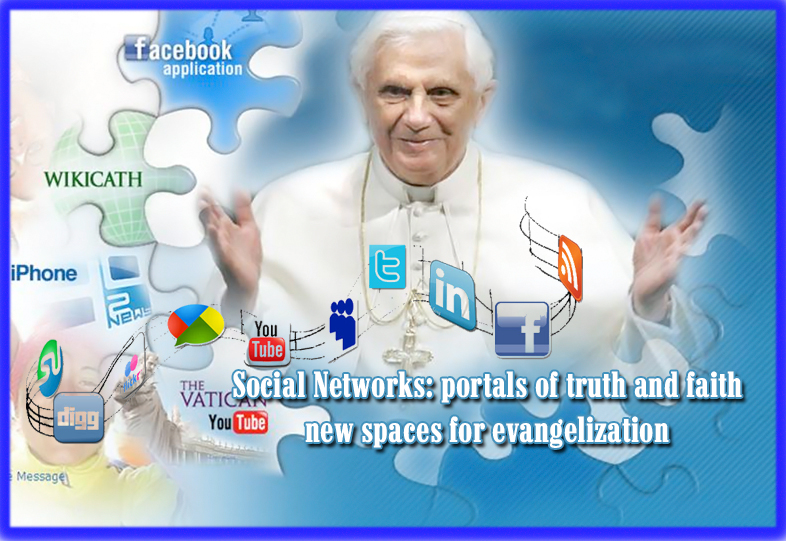
- Message for the 47th World Communications Day
-
Message of the FABC 10th Plenary Assembly Released -
Asia’s Bishops: Church Needs Renewed Evangelizers -
10 FABC Plenary Assemblies -
FABC Plenary Assemblies: An Attempt to Discern the Signs of the Times in Asia -
On the Conclusion of the Synod of Bishops -
Final List of Propositions of the Synod of Bishops -
Official Summary of the Final Message of the Synod of Bishops -
Pope's Lenten message 2013: Believing in charity calls forth charity -
Papal message for the World Day of Migrants and Refugees
Popular Post

- History of the Catholic Church in Vietnam
-
FABC Plenary Assemblies: An Attempt to Discern the Signs of the Times in Asia -
Message of the FABC 10th Plenary Assembly Released -
Asia’s Bishops: Church Needs Renewed Evangelizers -
10 FABC Plenary Assemblies -
Final List of Propositions of the Synod of Bishops -
Message for the 47th World Communications Day -
Pope's Lenten message 2013: Believing in charity calls forth charity -
Official Summary of the Final Message of the Synod of Bishops -
On the Conclusion of the Synod of Bishops




